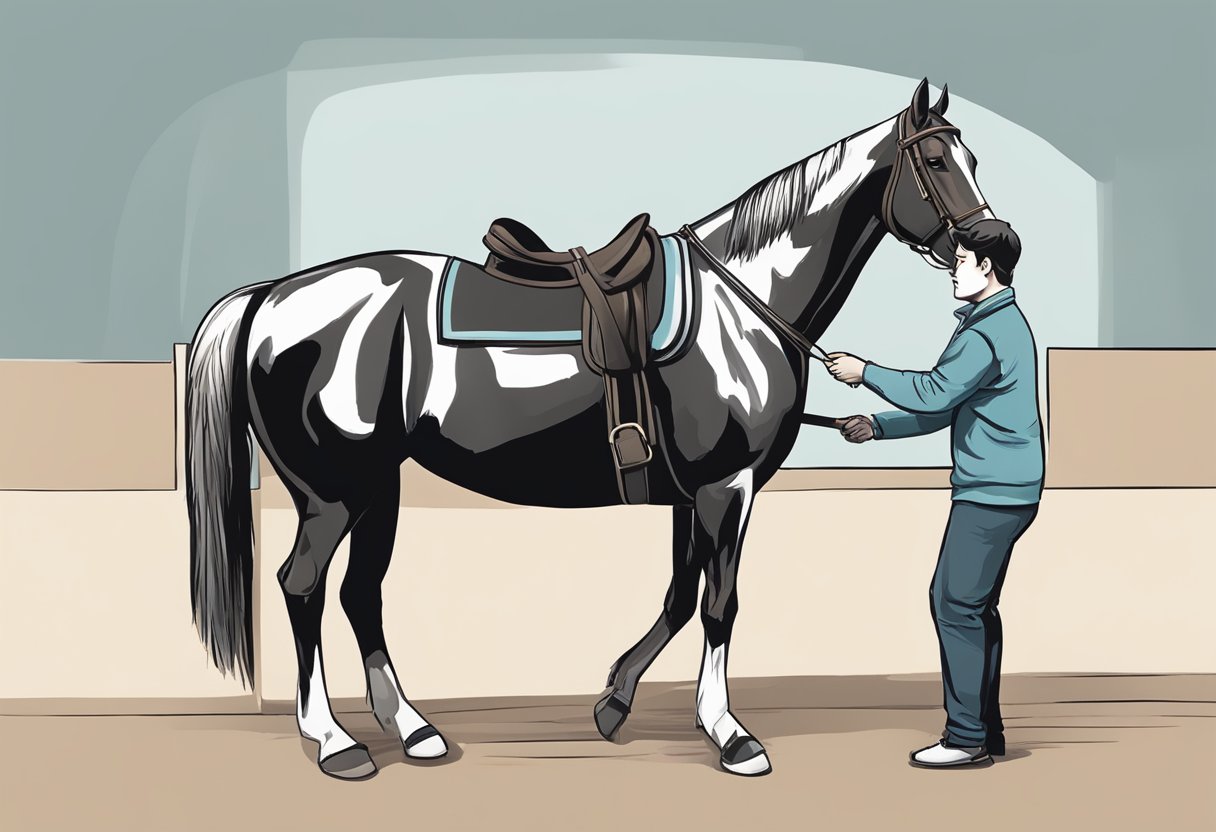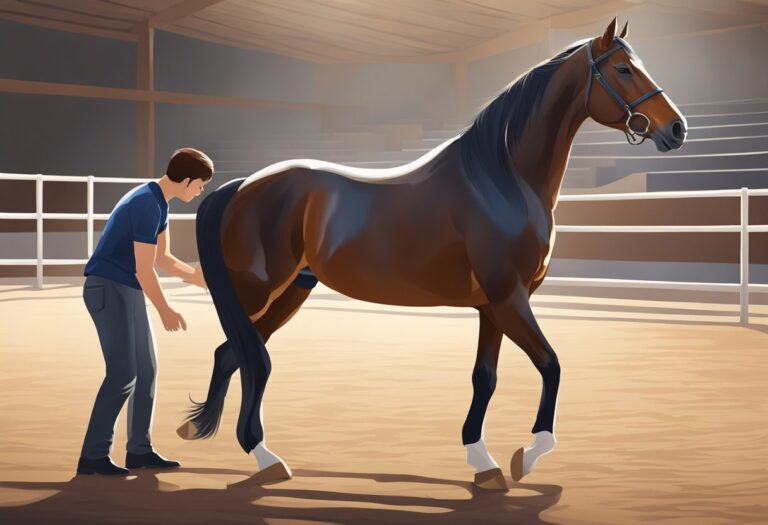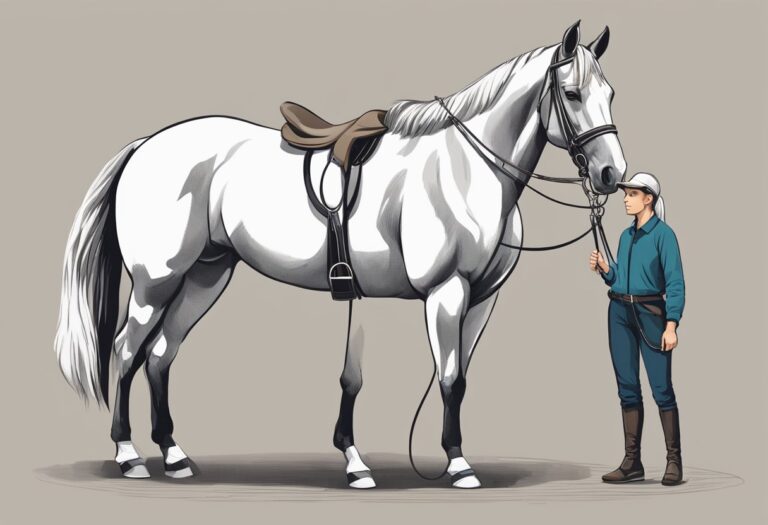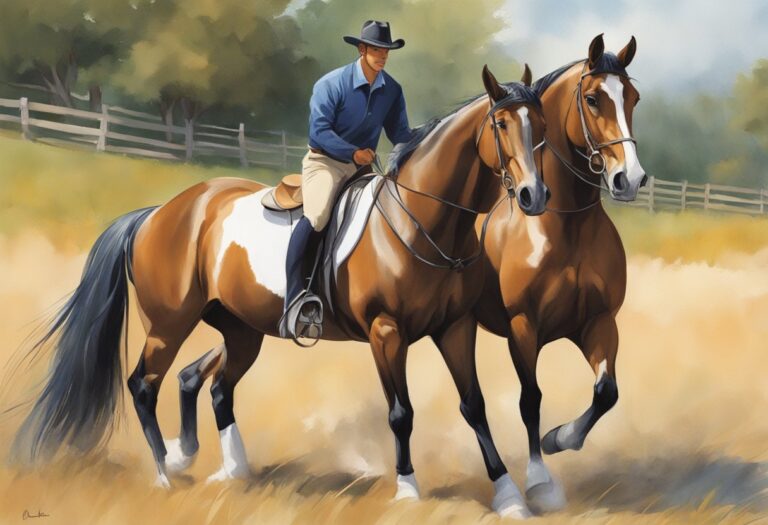When to Correct Unwanted Horse Behavior? A Guide for Horse Owners
Horses are magnificent creatures that require a lot of patience, care, and attention. A horse’s behavior can be unpredictable at times, and it is essential to understand when to correct unwanted behavior. Correcting unwanted horse behavior is a delicate process that requires a lot of knowledge and experience.
One of the most important things to consider when correcting unwanted horse behavior is timing. Correcting a horse’s behavior at the wrong time can lead to further problems and make the horse more difficult to handle. It is important to understand the horse’s behavior and why it is behaving in a certain way. This will help determine the appropriate time to correct the behavior.
Another important factor to consider when correcting unwanted horse behavior is the method used. There are many different methods to correct unwanted behavior, and it is important to choose the right one for the horse and the situation. The method used should be humane and effective, and it should not cause any harm or stress to the horse. It is important to have a clear understanding of the horse’s behavior and the underlying causes to choose the most appropriate correction method.
Understanding Equine Behavior

Recognizing Normal vs. Unwanted Behavior
Before correcting unwanted horse behavior, it is important to understand what is considered normal behavior. Horses are social animals and have a complex communication system that involves body language, vocalizations, and scent. They also have natural instincts that drive their behavior, such as the fight or flight response.
Normal horse behavior includes grazing, socializing with other horses, and engaging in self-maintenance behaviors like grooming and scratching. However, some behaviors may be unwanted or problematic, such as biting, kicking, bucking, rearing, or refusing to be caught or handled.
It is important to recognize the difference between normal and unwanted behavior to determine if intervention is necessary. Some unwanted behavior may be a result of pain, discomfort, or fear, while others may be a result of improper training or handling.
Factors Influencing Equine Behavior
Several factors can influence equine behavior, including genetics, environment, training, and management. Horses have individual personalities and temperaments that can affect how they respond to different situations.
The environment in which a horse is kept can also impact their behavior. Horses that are kept in small, confined spaces or without access to other horses may develop unwanted behaviors due to boredom or frustration. Proper management, such as providing regular turnout and mental stimulation, can help prevent unwanted behavior.
Training and handling techniques can also influence equine behavior. Horses that are trained using harsh or abusive methods may develop fearful or aggressive behavior. Positive reinforcement training techniques can help promote desired behavior and prevent unwanted behavior.
Overall, understanding equine behavior is crucial in determining when and how to correct unwanted behavior. By recognizing normal vs. unwanted behavior and considering factors that influence behavior, horse owners can provide appropriate intervention and training to promote positive behavior and a healthy relationship with their horse.
Timing of Correction

Immediate Response Requirement
When it comes to correcting unwanted horse behavior, timing is everything. The rider or handler must be able to respond immediately to the behavior in question. Waiting too long to correct the behavior can result in the horse not understanding what they did wrong. This can lead to frustration for both the horse and the rider.
Immediate correction is especially important when dealing with dangerous behaviors such as biting, kicking, or rearing. Waiting to correct these behaviors can result in serious injury to the rider or handler. It is important to have a plan in place for dealing with these behaviors before they occur.
Assessing the Situation
While immediate response is important, it is also important to assess the situation before correcting the behavior. The rider or handler must determine if the behavior is a result of fear, pain, or confusion. Correcting a behavior that is a result of fear or pain can make the situation worse and lead to more dangerous behavior.
It is important to take a step back and assess the situation before reacting. This will allow the rider or handler to determine the best course of action for correcting the behavior. This may involve changing the horse’s environment, addressing any underlying health issues, or providing additional training.
In conclusion, the timing of correction is crucial when dealing with unwanted horse behavior. Immediate response is required for dangerous behaviors, but it is important to assess the situation before reacting. By taking a step back and determining the root cause of the behavior, the rider or handler can develop an effective plan for correcting the behavior and improving the horse’s overall behavior.
Methods of Correction

Positive Reinforcement Techniques
Positive reinforcement techniques involve rewarding desired behavior to encourage its repetition. This method can be effective for correcting unwanted behavior in horses. For example, if a horse has a tendency to rear up when being mounted, the rider can reward the horse with a treat or praise when it stands still during the mounting process. This will encourage the horse to repeat the desired behavior.
Negative Reinforcement Techniques
Negative reinforcement techniques involve applying pressure or discomfort to discourage unwanted behavior. For example, if a horse is prone to biting, the handler can use a crop or a whip to tap the horse’s nose when it attempts to bite. This will create a negative association with the behavior and discourage the horse from repeating it.
Consistency in Training
Consistency in training is key to correcting unwanted horse behavior. Horses thrive on routine and predictability, so it is important to establish clear boundaries and expectations from the beginning. Handlers should be consistent in their approach to training and avoid sending mixed signals to the horse. This will help the horse understand what is expected of it and reduce the likelihood of unwanted behavior.
Overall, it is important to choose the appropriate method of correction based on the individual horse and the behavior in question. Handlers should always prioritize the safety and well-being of the horse and use methods that are humane and effective.
Safety Considerations

Handler Safety
When dealing with unwanted horse behavior, it is important to prioritize the safety of the handler. Horses can be unpredictable and dangerous animals, and it is essential to take appropriate precautions to avoid injury. Handlers should always wear appropriate safety gear, such as helmets and boots, and should be aware of the horse’s body language and behavior.
It is also important to have a clear understanding of the horse’s training and experience level. Untrained or inexperienced horses may require additional caution and patience when correcting unwanted behavior. Handlers should never attempt to correct behavior that is beyond their skill level or experience.
Horse Welfare
While correcting unwanted horse behavior, it is important to consider the welfare of the horse. Punitive or abusive training methods can cause physical and psychological harm to the animal and may exacerbate the unwanted behavior. Handlers should focus on positive reinforcement and reward-based training methods to encourage desired behavior.
It is also important to consider any underlying physical or mental health issues that may be contributing to the unwanted behavior. Horses may exhibit unwanted behavior as a result of pain, discomfort, or anxiety. Handlers should work with a veterinarian or equine behavior specialist to identify and address any underlying health issues.
By prioritizing handler safety and horse welfare, handlers can effectively correct unwanted horse behavior while maintaining a safe and positive training environment.
Long-Term Behavior Management

When it comes to correcting unwanted horse behavior, long-term management is key to ensuring lasting results. This involves implementing a routine and structure that promotes positive behavior, as well as ongoing training and reinforcement.
Routine and Structure
Establishing a consistent routine and structure can help prevent unwanted behavior from occurring in the first place. Horses thrive on predictability and can become anxious or agitated when their environment is unpredictable. This can lead to behaviors such as cribbing, weaving, or stall walking.
To promote positive behavior, it’s important to establish a consistent daily routine that includes regular feeding, turnout, and exercise. Horses should also be housed in a stable environment that is free from distractions and provides ample room for movement.
Ongoing Training and Reinforcement
Even with a structured routine, horses may still exhibit unwanted behavior. Ongoing training and reinforcement can help correct these behaviors and promote positive behavior in the long run.
Training should be consistent and focused on positive reinforcement, rather than punishment. This can include using treats or praise to reward good behavior, and ignoring or redirecting unwanted behavior.
In addition to training, reinforcement is also important to promote positive behavior. This can include providing horses with toys or other forms of enrichment to keep them engaged and prevent boredom.
By implementing a structured routine and ongoing training and reinforcement, horse owners can effectively manage unwanted behavior and promote positive behavior in the long run.
Professional Assistance

When to Seek Help
Correcting unwanted horse behavior can be a challenging task, and sometimes it is necessary to seek help from a professional. If a horse’s behavior is dangerous or aggressive, it is important to seek help immediately. In such cases, the horse may need to be evaluated by a veterinarian to rule out any underlying health issues that may be contributing to the behavior.
Other signs that may indicate the need for professional assistance include:
- The horse’s behavior is not improving despite consistent training and handling.
- The horse’s behavior is causing harm to other horses, people, or property.
- The horse is exhibiting unusual behavior that is out of character.
Choosing a Professional Trainer
When seeking professional help for unwanted horse behavior, it is important to choose a qualified and experienced trainer. Look for a trainer who has a good reputation and a proven track record of success in dealing with similar behavior issues.
It is also important to choose a trainer who uses humane and ethical training methods. Avoid trainers who use harsh or abusive methods, as these can cause long-term damage to the horse’s mental and emotional well-being.
Before hiring a trainer, it is a good idea to ask for references and to observe the trainer working with other horses. This will give you a better idea of their training methods and their ability to work with horses.
In conclusion, seeking professional assistance can be a valuable tool in correcting unwanted horse behavior. By knowing when to seek help and choosing a qualified trainer, horse owners can work towards creating a safe and enjoyable environment for both themselves and their horses.







